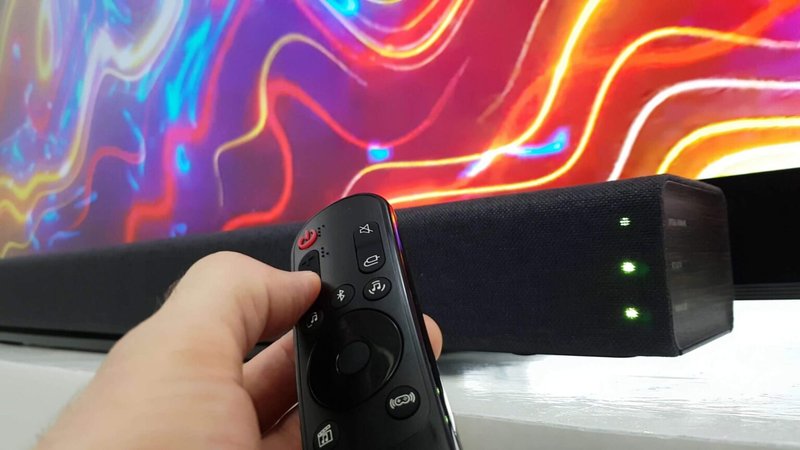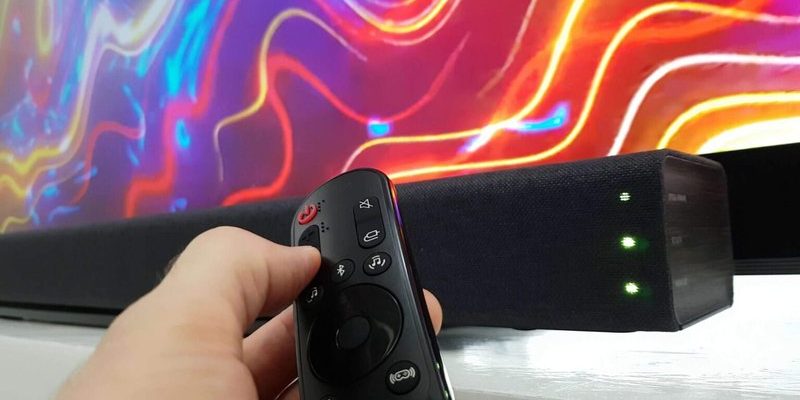
But hey—wouldn’t it be amazing if your LG soundbar remote could control your streaming device too? Like, use just one simple remote for both sound and streaming? That little dream is exactly what we’re sorting out here. We’ll talk about LG soundbar remotes, what they’re designed to do, and whether you can bend them to your will to control everything with a single click-dodger. Spoiler: It’s not always as straightforward as you’d hope, but let’s break it down.
So, grab your remote (whichever one you find first), pour yourself some coffee, and let’s make sense of how all these gadgets talk to each other—and if they’ll ever listen to you.
How LG Soundbar Remotes Work (And What They’re Built For)
LG soundbar remotes are like those quirky multi-tools that promise a dozen features but mostly focus on what they do best: controlling the soundbar. On most LG remotes, you’ll get the basics—volume up, down, mute, input selection, sound mode, and power. Honestly, that’s their home turf. They’re designed to pair seamlessly with the LG soundbar, so things like changing the bass or flipping to optical input just work, no weird syncing or code input required.
However, if you’ve ever squinted at your LG remote hoping to spot a “Netflix” or “Fire TV” button, you probably noticed something: those buttons are nowhere in sight. That’s because most LG soundbar remotes aren’t universal remotes. They’re specialized tools, not Swiss Army knives. Their job is to get your sound right—not to flip channels or navigate streaming menus.
But there’s a twist. Some soundbars (especially higher-end ones or those with smart features) toss in extra features like HDMI-CEC, which—when it behaves—can make devices play nicer together. More on that soon.
Why Can’t LG Soundbar Remotes Control Streaming Devices Directly?
Here’s the thing: controlling a streaming box (like a Roku or Apple TV) usually means sending specific commands that only that device understands. LG soundbar remotes aren’t programmed with those codes out of the box. It’s kind of like expecting your car keys to start the neighbor’s truck. Sure, they’re both keys, but they’re cut for different locks.
For a remote to control various devices, it needs to be either “universal” (meaning it’s pre-programmed with a ton of device codes, or can learn them) or it needs some inside track—like IR blasters or HDMI-CEC, the latter being a kind of “group chat” for your home theater devices.
With LG soundbar remotes, they just aren’t baked that way. The remote talks mainly in the language of LG soundbars, maybe a few LG TVs, but not in the dialects streaming sticks understand. You won’t find a “pair” button for syncing the LG soundbar remote directly with a Roku, nor will you see an option to enter a specific code for your Fire TV.
What About Universal Remotes? (And How They Compare)
So if LG soundbar remotes can’t control streaming sticks, what’s the alternative? Enter the world of universal remotes. These gadgets are like the social butterflies of the remote world—they know how to talk to just about everyone. You pop in the right code, point it at your device, maybe even “teach” it a few buttons, and suddenly your remote can talk to your TV, soundbar, and streaming stick—all in one go.
Universal remotes (think Logitech Harmony, GE, or even broad-compatibility remotes from cable companies) are built for complexity. They include a massive library of device codes, so when you want to sync a new gadget, you just run through the setup, or sometimes let the remote auto-detect. That’s a lifesaver when you’re sick of the remote shuffle.
But here’s a little dose of reality: good universal remotes can be pricey, and setup can feel a bit like herding cats if you’re not super techy. Still, if you hate clutter more than hassle, they’re worth a look.
Can HDMI-CEC Help You Control Streaming Devices?
Okay, let’s talk HDMI-CEC (which stands for HDMI Consumer Electronics Control). This feature is sort of like a group text among all your HDMI-connected devices. If everything is CEC-compatible, then pressing “Power” on your soundbar remote could (in theory) also turn on your TV and maybe even wake up your streaming box.
In practice, though, HDMI-CEC is a bit like that flaky friend who sometimes shows up on time, but sometimes ghosts you entirely. You might be able to control your TV’s power and volume through the soundbar remote, but controlling a streaming device’s menus or playing/pausing Netflix with it? Usually no dice.
Here’s how it typically works:
- You have an LG soundbar with HDMI-CEC support, connected to your TV via HDMI ARC.
- Your TV also has HDMI-CEC enabled and you’ve got a streaming stick plugged into the TV.
- Using the LG remote, you *might* be able to adjust volume or power—because the signal gets passed through the TV to the soundbar—but actually navigating the streaming device’s menu is a whole other story.
It’s helpful for basic stuff, but full control is still going to need the original streaming device’s remote.
LG Soundbars with “Magic Remote” Functionality
Let me explain something that trips folks up: some LG TVs come with a “Magic Remote,” which is this pointer-remote that controls your TV and sometimes paired external devices. But that’s not the same as the soundbar remote! The Magic Remote can sometimes control soundbar volume (and yes, with a bit of luck, even navigate a streaming menu if your streaming device supports CEC), but the soundbar remote itself? Not so magical.
If you’re hoping the LG soundbar remote is secretly a Magic Remote in disguise, I’m afraid you’ll be disappointed. They look similar and the branding is close, but their “brains” are different. The Magic Remote is built for multitasking, while the soundbar remote is more like a single-minded drummer—good at keeping the beat, not so great at solos.
How to Pair or Sync Remotes for Better Control
You might be wondering, “Can I at least sync my LG soundbar remote with something else—for example, my TV remote?” In some cases, yes! Many LG soundbars allow you to set them up so your TV’s remote (especially if both are LG) can control the soundbar’s basic functions like volume and power. This is often handled during setup or by enabling “Simplink” (LG’s version of HDMI-CEC).
But as for pairing your LG soundbar remote directly with a streaming device? Not happening. The only real “sync” option is to use your TV’s remote (if the TV supports controlling connected streaming devices), or to invest in a universal remote.
Here’s a quick story: I once helped a friend set up their fancy LG soundbar, only for them to accidentally “reset” the remote in the menu. Suddenly, nothing worked. The fix? Remove the batteries, wait a minute, then reinsert. Sometimes remotes just need a quick nap and a fresh start.
Troubleshooting: Common Remote Control Issues
Let’s face it—electronics love to misbehave. If your LG soundbar remote isn’t working, or you’re struggling to get it to control anything (even the soundbar), try these basic troubleshooting steps:
- Check the batteries. Seriously, dead batteries are the
- Reset the remote. Take out the batteries, press every button (to drain any leftover juice), then put the batteries back in.
- Re-pair the devices. If your soundbar supports pairing, follow the manual’s steps—usually holding certain buttons until LEDs flash.
- Confirm IR “line of sight.” Make sure nothing is blocking the path between your remote and the soundbar.
- Try a universal remote. If nothing else works, this is the nuclear option (and can also unify your streaming device controls).
And if you’re trying to use HDMI-CEC, double-check your TV and soundbar settings—sometimes “reset” is buried deep in the menu, or you have to turn “Simplink” back on after a firmware update.
Alternatives: Apps and Voice Control
Say you’re totally done with remotes (I get it). There’s actually some hope with smartphone apps and voice assistants.
Many LG soundbars support control via the LG Sound Bar app. It won’t control your streaming stick, but it lets you manage soundbar settings from your phone—handy if the physical remote wanders into the couch cushions.
On the streaming side, devices like Roku and Fire TV have their own mobile apps, which can be used for navigation, typing, and search. If you’ve got Alexa or Google Home set up, you can even use voice commands for basic playback.
If all else fails, remember: sometimes the easiest way to control your devices is just by shouting, “Hey Google, turn up the volume!” and hoping the robots are listening.
Wrapping Up: Can LG Soundbar Remotes Control Streaming Devices?
So, here’s the bottom line. LG soundbar remotes are designed to be simple and focused—they do a great job of controlling your soundbar, maybe even your LG TV, but controlling streaming devices like Roku or Fire TV isn’t in their DNA. For true multi-device power, you’ll want either a universal remote or to rely on your TV remote (if it’s set up just right). Sometimes, a little HDMI-CEC magic will get you basic control, like volume, but don’t expect to browse Netflix with your soundbar remote.
The tech world isn’t quite as seamless as we’d all like, but with the right setup—and maybe a little patience—you can still minimize remote chaos. And hey, if all else fails, there’s nothing wrong with embracing the pile of remotes on your coffee table. At least you’ll always have a spare set of batteries within arm’s reach.
